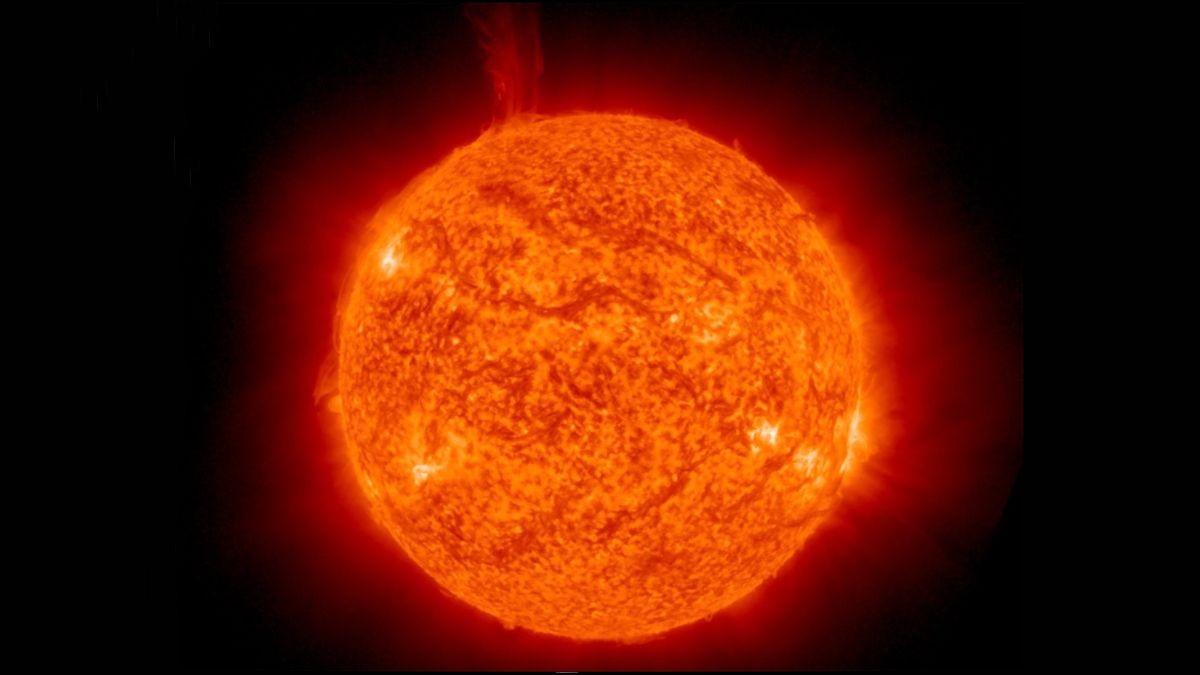
The sun unleashed an eruption powerful enough to warp its own magnetic field this week.
Satellites observed the solar eruption, known as a coronal mass ejection (CME), on Wednesday (Nov. 15), capturing the bright burst of super-hot plasma as it shot out into space. The Solar Ultraviolet Imager on the U.S. National Oceanic and Atmospheric Administration's (NOAA) GOES-16 satellite snapped a photo of the sun with a trail of material spewing from near the north pole region.
CMEs originate from sunspots, which are dark areas on the surface of the sun where powerful magnetic field lines often tangle, cross and reorganize, causing a sudden explosion of energy. This release of energy can eject gigantic plumes of solar material that can travel through space at millions of miles per hour. The high-speed energy released after the Nov. 15 CME caused temperature variations along the sun's magnetic field lines, European Space Agency (ESA) officials said on X (formally known as Twitter).
Related: The worst solar storms in history

"The CME was so large that it warped the #sun's magnetic field, disrupting the delicate balance of forces all around our star and causing the large outwards rush of mass," ESA Operations said in an X post that shared a view of the solar eruption captured by the Solar and Heliospheric Observatory (SOHO) spacecraft.
The sun-watching SOHO satellite, a joint effort of ESA and NASA, monitors the effects of space weather on our planet and helps researchers forecast potentially dangerous solar storms. Thankfully, this recent solar eruption was not directed toward Earth; otherwise, it could have impacted communication systems across the planet, ESA Operations said.
Generally, CMEs look like a giant smoke ring or a halo. However, SOHO captured a stunning video of the CME showing a bright bulbous plume, followed by a rush of mass through its center, resembling the filament in a light bulb.
The CME was so large, that it warped the #Sun’s magnetic field, disrupting the delicate balance of forces all around our star and causing the large outwards rush of mass.📸 ESA/NASA pic.twitter.com/OPnqJ8EJAdNovember 16, 2023
NASA's Solar Dynamics Observatory (SDO), which studies the solar atmosphere to better understand the sun's influence on Earth and near-Earth space, also spotted the massive CME. ESA shared a time-lapse taken by the satellite, capturing a view of the solar outburst on Nov. 15 and the massive amount of energy released from the surface of the sun.
"The energy cracks like a whip as it follows complex arcs of magnetic field many times the size of Earth just above the surface," ESA Operations said in a post on X.
After the #CME, energy was released at extremely high speeds – causing temperature variations along the Sun’s magnetic field lines.The energy cracks like a whip as it follows complex arcs of magnetic field many times the size of Earth just above the surface.📸 NASA (SDO) pic.twitter.com/N9mhJphbXWNovember 16, 2023
ESA's Vigil mission will follow in the footsteps of SDO, closely monitoring the sun's activity to provide advance warning of oncoming solar storms. The mission is currently in development, with launch slated for the mid-2020s.
When operational, Vigil will help prepare for and protect against solar storms that not only pose a threat to power lines on Earth but also astronauts and spacecraft in orbit, ESA officials say.







